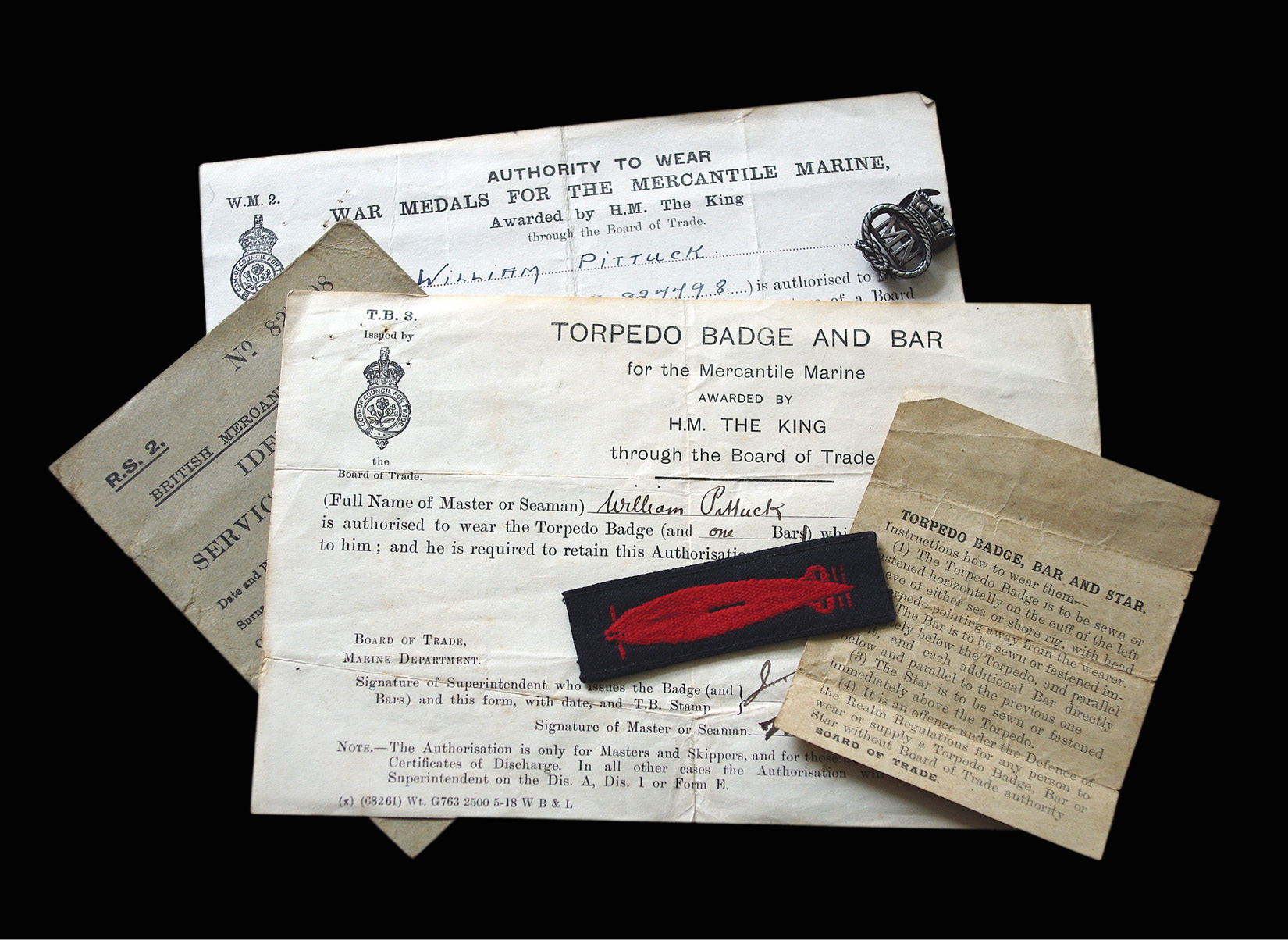89
Torpedo badge

IN THE WAKE of the Lusitania affair and complaints from President Woodrow Wilson, the German policy of attacking all ships that entered the designated war zone around the United Kingdom was suspended. Wilson had sent three firmly worded notes to the Germans expressing the right of the American ships to sail unmolested on the high seas, and the U.S. president went so far as to warn the Germans that any further deliberate acts of war against American shipping would be seen as “deliberately unfriendly.” The sinking of another liner off the coast of Ireland on August 19, 1915—the White Star Line’s SS Arabic with a cost of forty-four people—did little to allay American fears, and with the Germans becoming increasingly nervous about the reaction of the U.S. government, the U-boats were withdrawn from attacking merchant ships and turned their attention to the Grand Fleet.
But for Admiral von Holtzendorff, chief of the admiraly staff of the German navy and a convert to the doctrine of “Unrestricted Submarine Warfare,” there was a gamble to be taken. With the odds stacked against the Germans on the Western Front, and with the strength of the British Navy rising, von Holtzendorff issued a top-secret memorandum on December 22, 1916, advising the kaiser and the military High Command to resume submarine attacks on all shipping:
I have the honour to respectfully submit to your Excellency . . . a memorandum on the necessity for the commencement of an unrestricted campaign of submarine warfare at the earliest opportunity.
The war requires a decision before autumn 1917. . . . If we succeed to break England’s backbone, the war will immediately be decided in our favour. England’s backbone is the merchant tonnage, which delivers essential imports for their survival and for the military industry of the British islands. . . .
Based on a monthly rate of destruction of 600,000 tons of shipping through a campaign of unrestricted submarine warfare . . . at least two fifths of the neutral tonnage sailing in the trade with England will be deterred by such a campaign . . . and the current volume [of] English sea borne trade will be reduced by 39% within five months. This would not be bearable for England, neither in view of her future position after the war, nor in view of her ability to continue the war effort. Already, the country is at the verge of a food crisis, which will soon compel it to attempt to undertake the same food rationing measures, which we, as a blockaded country, have been forced to adopt since the outbreak of the war.
Therefore my conclusion is that a campaign of unrestricted submarine warfare . . . has to accept the risk of American belligerence, because we have no other option. In spite of the diplomatic rupture with America, the unrestricted submarine warfare is nevertheless the right means to conclude this war victoriously.
The kaiser took the gamble; he agreed to the new campaign and authorized its start from February 1. For the merchantmen, the idea of being attacked by submarines, a hidden menace, was terrifying. The torpedo—the self-propelled, submarine-launched weapon—had been effective since the turn of the century and was a means of ensuring that a ship was struck by a significant warhead, with devastating results. For a merchantman, being “torpedoed” or “submarined” meant loss of ship and livelihood—and the need to find a new berth.
As a recognition and mark of distinction for those mariners who had been sunk by submarines (or mines), and who had lived to sail again, the Board of Trade granted the right to wear an embroidered torpedo badge on the left sleeve—the torpedo meant to face forward. The example illustrated was awarded to William Williams Pittuck of Essex, who, in his sixties, a veteran seaman and master, carefully preserved the honor as a remembrance of a sinking—most likely by submarine, most probably by a torpedo itself.
At first, the British response to the submarine menace was an Admiralty-sponsored scheme of direct attacks on U-boats by merchantmen—a policy that led to the execution of Captain Fryatt, captain of the SS Brussels, who had attempted to ram the U-33 on March 28, 1915. With the resumption of unrestricted attacks in 1917, the rate of shipping losses doubled and then tripled; only then, in the early summer of 1917, was the Convoy System introduced, providing safety in numbers and the support of naval ships, which led to a decline in shipping losses.
The Germans had gambled that they could bring Britain to its knees by their policy of submarine attacks—but failed. The stakes were high, for the Americans broke off diplomatic relations with Germany and formally declared war with them on April 6, 1917. At this point, for the Germans the war was, ultimately, lost.